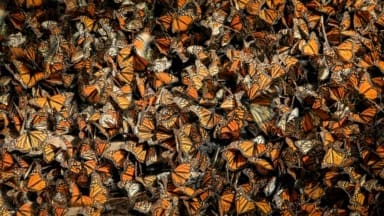
If well managed, wildflower seeded solar farms can provide secure and varied habitats for a range of species, from ground nesting birds and small mammals to reptiles and a wide range of invertebrates, including bees and butterflies.
Landscape ecologist, Leroy J. Walston of the Argonne National Laboratory conducted research from 2018 through to 2022, two solar farms overing a dozen hectares each in Minnesota, U.S. The scientists recorded the number and kinds of pollinators the wildflowers attracted and found populations of bees, beetles, butterflies, moths, and more had surged on-site, where they continued to decline elsewhere in the U.S.
Walston and his team reported goldenrod soldier beetles flourish as the solidago bloomed and attracted a myriad of other insects. The researchers observed substantial growth in native bees numbers, with their population increasing 20-fold by the study’s end in 2022. Monarch butterflies – which have seen drastic 80% declines across the U.S., saw their numbers increase across the sites. Furthermore, the research indicated that twice as many bees visited the soya bean fields adjacent to the solar sites as fields farther away, making the nearby plots’ gains comparable to those of locations abutting land enrolled in conservation programs.
According to the Center for Biological Diversity’s 2017 report, nearly one in four native bee species in the U.S. is endangered and at increasing risk of extinction. Humans’ pesticide use, greenhouse gas emissions and habitat destruction have sparked mass pollinator die-offs. Further big losses would be disastrous for ecosystems and agriculture – especially as 75% of North American plant species rely on pollinators.
Ecologist Zara Dowling said that thus far, developers have been slow to adopt wildflower planting as solar farm owners are often concerned about the risks of planting and uncertain as to the costs. According to Dowling, if incentives emerge, the research conducted by Walston and his colleagues should provide the necessary nudge to make the practice of seeding wildflowers on solar farms, common.
The U.S. government’s energy goals include the establishment of several million hectares for solar energy, with more than 80% of the projects planned for former agricultural land. Seeding the solar farm, could mitigate the declined and help save vanishing pollinators.

